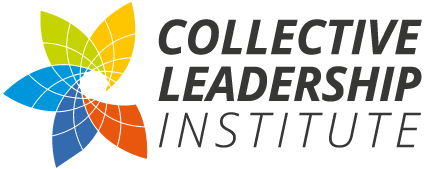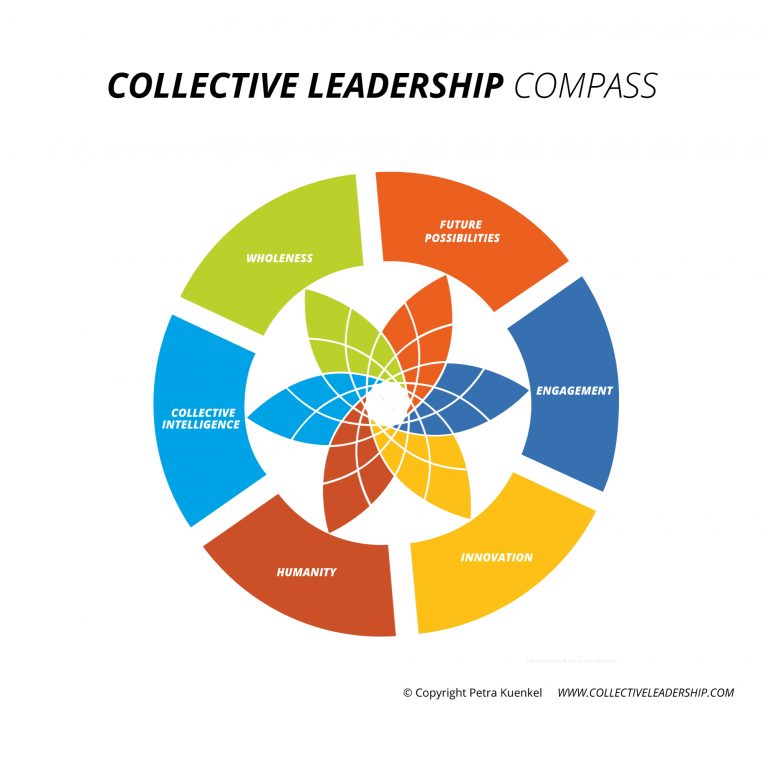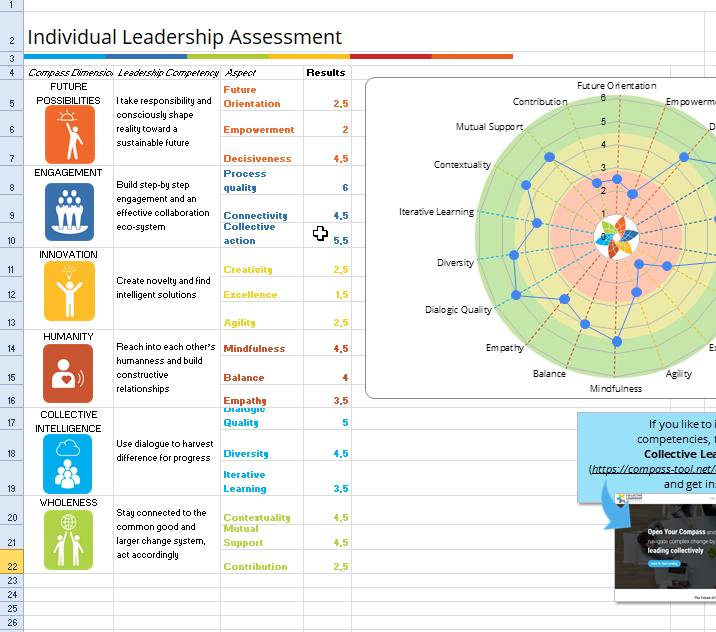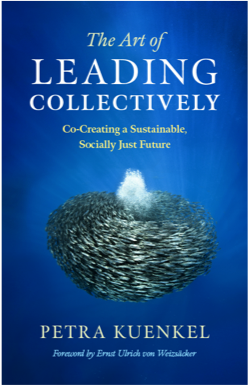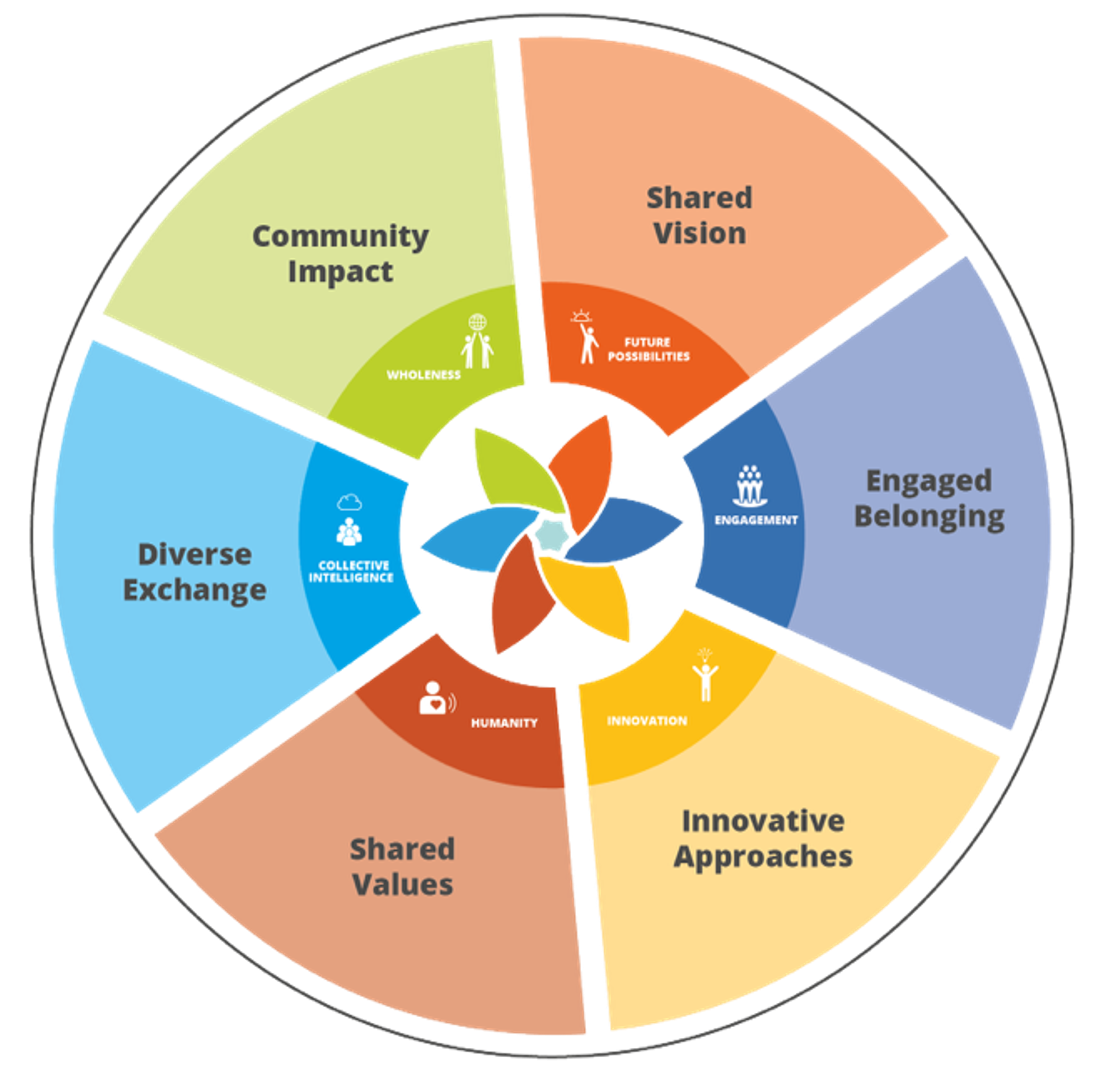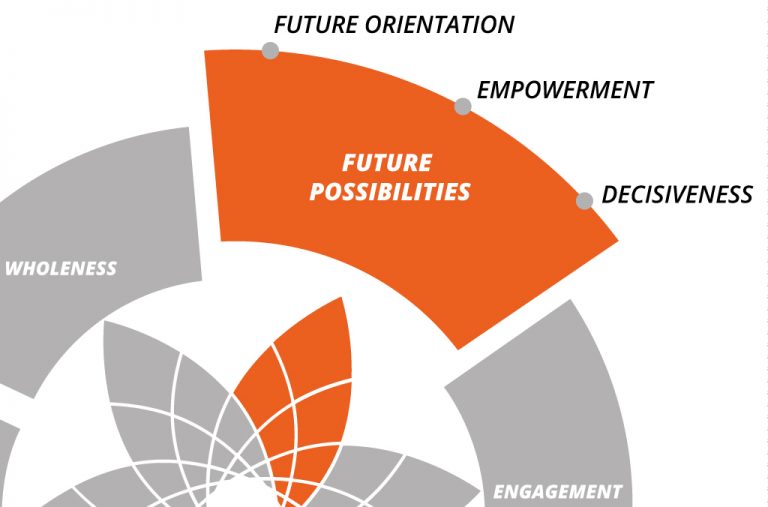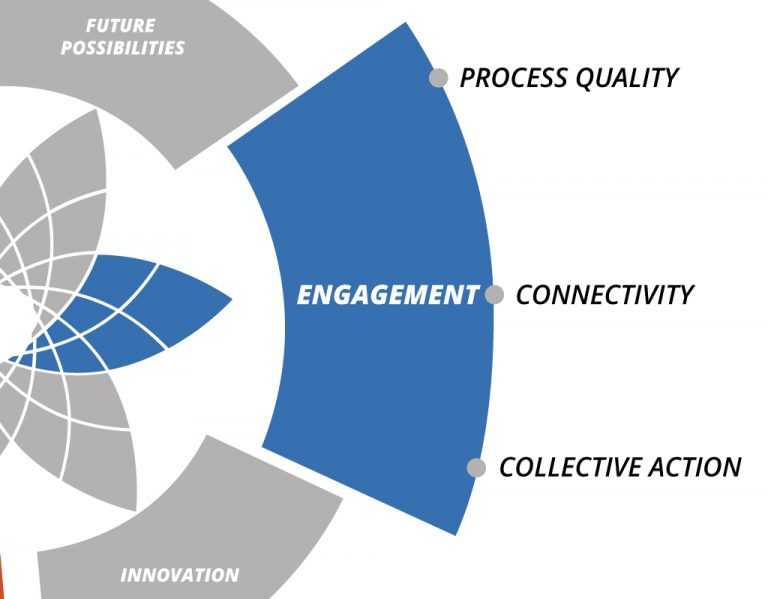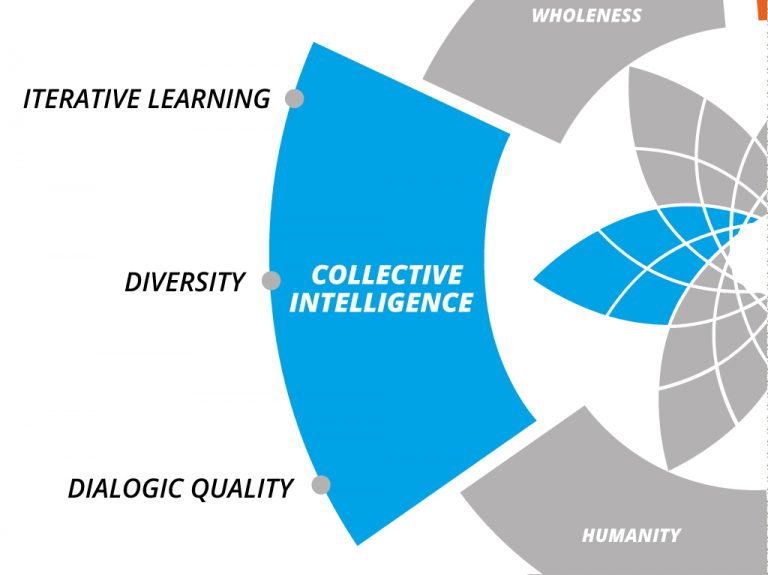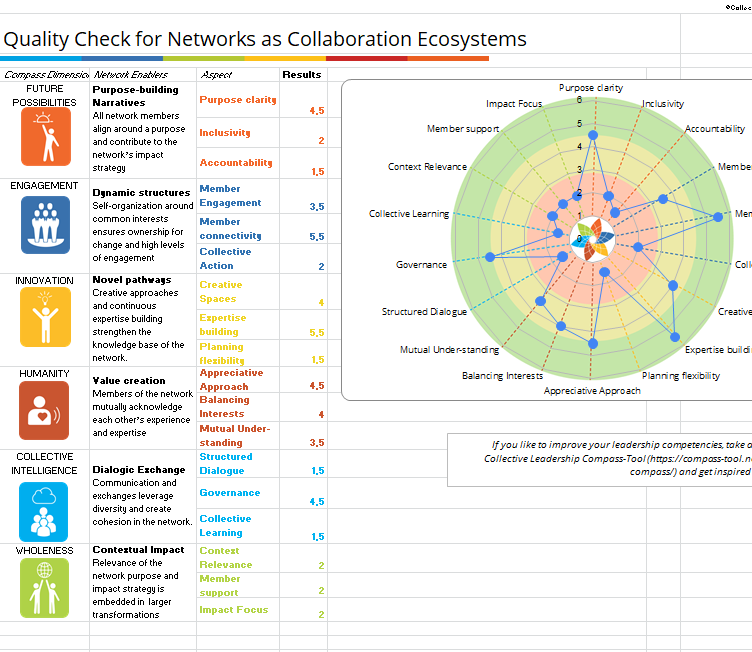The Collective Leadership Compass was developed by the Collective Leadership Institute’s Founder Dr. Petra Kuenkel. Combining over 20 years of practice in complex multi-stakeholder settings around systems change for sustainability with scientific exploration, Dr. Petra Kuenkel identified the various dimensions and aspects that comprise the Compass.It can be used both as a diagnostic tool and a process methodology. It focuses on invigorating human interaction systems as core drivers of transition processes to assess, plan, and enact the collaborative change required for sustainability. It helps navigate complex challenges by introducing a meta-level guiding structure, which becomes a fractal of the competence and collaboration pattern that needs to emerge for the transition envisaged.
The Collective Leadership Compass is a tool for supporting individuals, teams, and organizations to strengthen leadership dimensions and build vibrant and robust “collaboration ecosystems” in change processes. The Compass is designed to assist process competence throughout any initiative.
- It has the potential to enliven collaboration processes and help identify collaboration challenges.
- It helps individuals rediscover and invigorate their human competencies for collective leadership.
- It reveals patterns of skills and helps teams enliven collaboration by recognizing when specific capabilities are called for, require building, or are out of balance.
- It recognizes that every context is unique and different ‘aspects’ may come into focus at different moments in every process.
